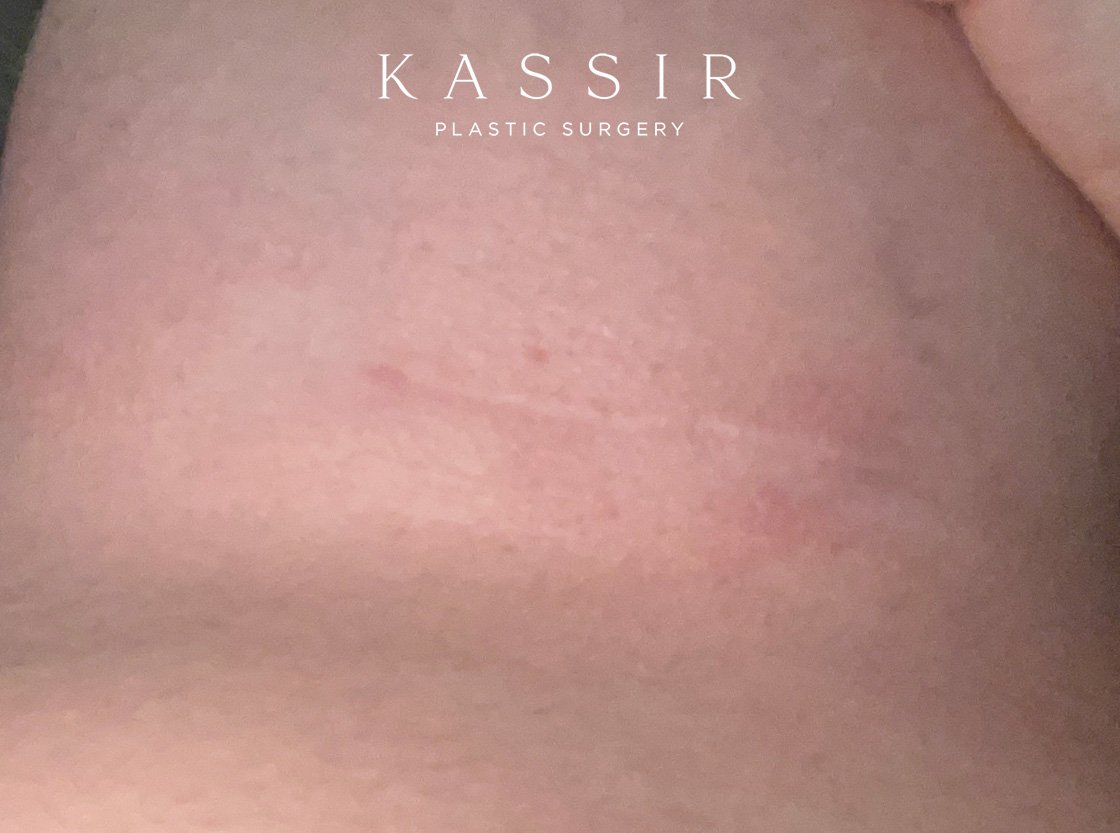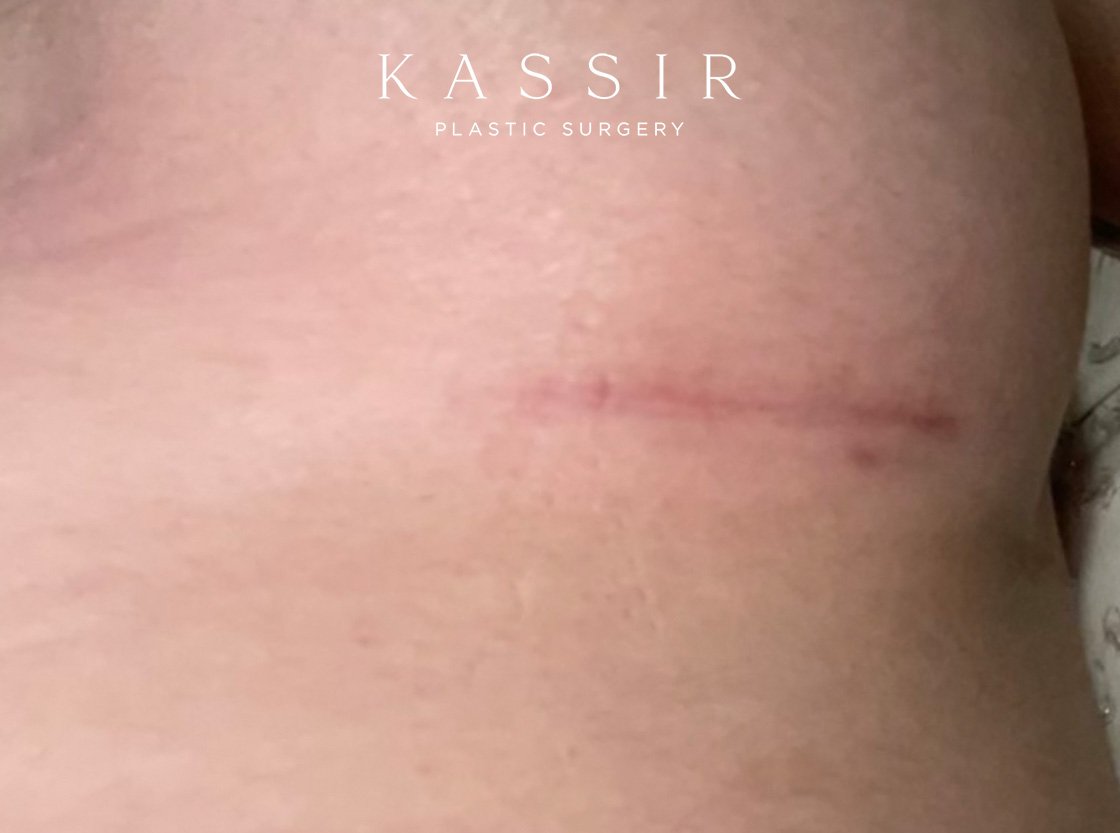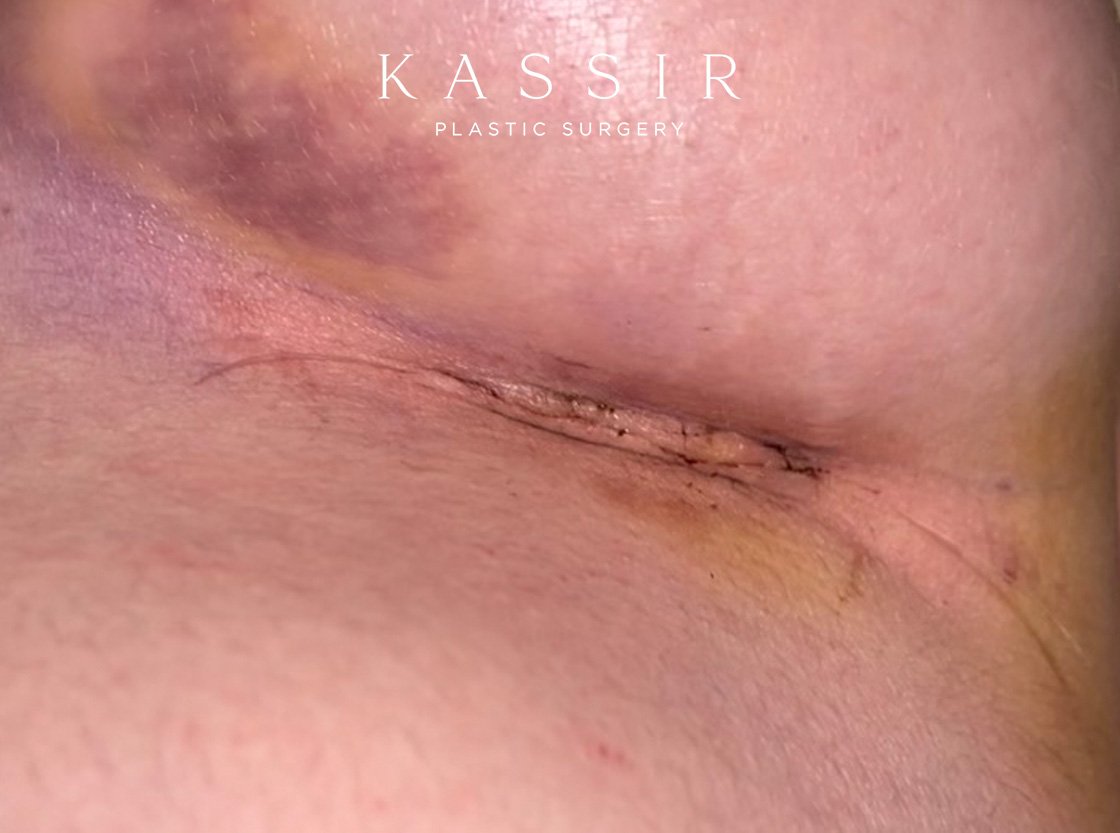
Best Breast augmentation prices and recovery tips. Everything you need to know.
Breast augmentation surgery is much more than just enlarging a women's breast. There are many reasons women choose to undergo breast augmentation, but one of the most common is improving their self-esteem and body image. Whether you were born with smaller breasts or have lost volume due to weight loss and age, breast augmentation surgery can help restore the shape you desire. Dr. Franck at Kassir Plastic Surgery is a Cornell-trained plastic surgeon and expert in breast surgery. His profound knowledge and meticulous attention to detail are the keys to his successful and safe results. Recovery after breast augmentation is fast and with very little discomfort.
Breast augmentation surgery patients are among the most satisfied patients because they typically experience a great degree of positive change in body image and confidence.
What is breast augmentation surgery?
Breasts can be underdeveloped, also known as hypoplastic, or simply lost volume due to pregnancy or weight loss, often referred to as hypomania. In breast augmentation surgery, breast implants containing either silicone or saline will be placed underneath the breast tissue and chest muscle to increase the size, shape, and projection of the breasts. The operation is done in the operating room with the patient asleep and completely pain-free. After the surgery, the patient will go home in a soft supportive bra and can resume most routine activities.
Who is a candidate for breast augmentation?
Ideal candidates for breast augmentation are women who have good shape and want to increase volume and projection. Also, women who have “deflated” breasts after pregnancy and breastfeeding or women who lost volume due to weight loss are good candidates if the overall shape and nipple position is good. More challenging are breasts that droop downwards with the areola and nipple appearing too low. In this case, a breast lift with or without an implant might be the more appropriate surgery. Some people have one breast that is different from the other. You might have one that is bigger or smaller than the other. Some people have nipples that are in different places. If you have breast asymmetry, breast augmentation can be combined with other procedures to improve symmetry and proportions.
Breast augmentation scars?
Dr. Franck prefers the incision placed hidden within the breast crease. This approach has a slightly lower risk of complications compared to an incision around the nipple and, at the same time, allows great control for the implant placement underneath the breast tissue. With the implant in place, the scar is inconspicuous for the patient or from the front as it falls into a natural shadow. The incision is about 3-4cm long and will heal with dissolvable stitches.
What is the ideal breast size and shape?
There is no one ideal breast size and shape. Each breast augmentation is as unique as a patient's anatomy. Some women have smaller chests, and some have wider ones. Some have narrow breasts, and some wider. Some women have round breasts, while others have more angular breasts. The ideal implant is a combination of your anatomy and the desired look that you want to achieve. Ultimately a soft and round and proportional shape that fits your frame will always look beautiful. Ultimately, the ideal breast size and shape is up to the individual woman.
What implant size is right for me?
The most common question asked by breast augmentation patients is "What size implant should I get?". Unfortunately, there is no easy answer. The answer really depends on your body type, anatomy, your desired look, and the amount of existing breast tissue. Breast implants are measured in cubic centimeters (cc), which is different than a bra size. A 300cc implant may look very different in two women depending on their body type and body weight. The breast implant also should fit the width of the patient's breast. An implant that is too wide will show on the sides and look unnatural. Breast augmentation patients who desire a more natural look might want less projection than the patients who desire a very augmented breast shape. Furthermore, the patient's skin quality will play a major role. Saggy skin will stretch easier with heavy implants. All these factors make it so important to consult with an experienced and skilled plastic surgeon. When you meet with Dr. Franck he will measure your anatomical landmarks and characteristics and discuss with you the ideal volume and implant for you. This way you will feel safe and confident that you make the right decision.
What type of implant is right for me?
There are two types of breast implants: silicone and saline. Both have their advantages and disadvantages. Saline implants are filled with sterile salt water and are less expensive than silicone implants. They also require a smaller incision for placement. However, saline implants can sometimes give the breasts a less natural look and feel. Silicone implants are filled with a gel that closely resembles human fat. They tend to give the breasts a more natural look and feel and are the overall preferred implant among most plastic surgeons.
Is the implant placed above or below the chest muscle?
Implants are always placed underneath the breast tissue but can be above or below the chest muscle (pectoralis major muscle).
We prefer placing the implant in the majority of cases below the muscle and the breast tissue. There are numerous reasons for that. The breast implant underneath the muscle will lead to a smoother transition of the upper part of the breast and give it a more natural shape. Studies have shown that placement beneath the muscle will decrease capsular contracture, which is a hardening of tissue around the implant. Another benefit is that the muscle separates the patients’ breast tissue from the breast implant, which makes it easier to be differentiated on mammograms.
Breast augmentation recovery
The surgical procedure is performed in our surgical centers in New York City or New Jersey. Breast augmentation surgery is an ambulatory surgery, which means you can go home the same day. Recovery times vary from patient to patient but are usually pretty short. Most people feel well enough to return to work and their normal activity levels within a few days. There might be some discomfort for the first few days, which can be alleviated with medication. You will need to sleep on your back for at least one week and not lift anything heavier than 10 pounds during that time. You should also avoid any strenuous activity or exercise for four to six weeks. You will have a follow-up appointment scheduled within one week of your surgery so Dr. Franck can check on your progress and make sure you are healing correctly. It is vital to keep all follow-up appointments so we can monitor your progress and address any concerns you might have.
What are the risks associated with breast augmentation surgery?
As with any surgical procedure, there are some risks associated with breast augmentation surgery. However, when performed by a trained and skilled plastic surgeon like Dr. Franck, complications are rare. Some of the potential risks include infection, bleeding, capsular contracture, and implant rupture.
Infection: Infection is a rare complication that can occur after any surgery. The risk of infection after breast augmentation surgery is less than 1%. Infections can typically be treated with antibiotics. In very rare cases, an infected implant might need to be removed.
Bleeding: Bleeding is another rare complication that can occur after any surgery. If you have any bleeding after your surgery, it will usually happen within the first 24 hours and can most often be managed with compression and observation. In very rare cases, a patient might need to return to the operating room to have the area cleaned out.
Capsular contracture: Capsular contracture occurs when scar tissue forms around the implant, causing the breast to feel hard. This complication can occur with both silicone and saline implants. The risk of capsular contracture is less than 10%. In very rare cases of capsular contracture, the implant will have to be replaced, and the capsule will need to be removed.
Implant rupture: Implant rupture is a very rare complication that can occur with both silicone and saline implants. The risk of implant rupture is less than 1%. If an implant ruptures, you will need to have it removed and replaced.
Frequently asked Questions with Breast Augmentation Surgery
-
Immediately after the breast augmentation procedure, you will notice the difference in volume and shape. Depending on how large the implants are, you will see the final results after a few weeks once the swelling has decreased and the skin has had time to stretch.
-
Two types of breast implants are commonly used: saline and silicone. Both have their benefits and drawbacks, so it is essential to consult with a board-certified plastic surgeon to discuss which type of implant is right for you.
Saline breast implants are filled with sterile salt water, while silicone implants are filled with a gel. Many women believe that silicone breast implants look and feel more natural than saline breast implants. Additionally, since saline implants can sometimes leak, some women feel that silicone implants offer more peace of mind. Studies have shown that there is less capsular contracture with silicone implants.
-
Gummy bear implants are a newer type of silicone implant that is becoming increasingly popular. They are also called cohesive silicone gel implants, which means that they retain their shape and do not leak if they rupture. Many women feel that cohesive silicon implants offer the best of both worlds: the natural look and feel of silicone implants with the peace of mind that comes with knowing that they will not leak if ruptured.
-
There are different ways of placing the incision in breast implant surgery. We prefer the incision along the breast crease. That way, the incision is hidden and, once fully healed nearly invisible This approach also has a slightly lower risk of complications.
-
The breast implant can be placed in one of two locations: underneath the pectoral muscle (submuscular), directly behind the breast tissue, and over the pectoral muscle (subglandular).
Submuscular placement is often recommended because it offers more support to the implant, which can help to decrease the risk of capsular contracture. Additionally, submuscular implants tend to look and feel more natural than sub-glandular implants. However, this type of placement may require a little bit more recovery period and cause more discomfort than sub-glandular placement.
-
No, you should not feel any pain during your surgery. You will be given general anesthesia to keep you comfortable during the procedure. Additionally, we will use a long-acting local anesthetic to help manage any post-operative pain. Over-the-counter pain medication should be able to alleviate any discomfort you might have.
Most women report that recovery from breast augmentation is fairly easy. You will likely experience some swelling and bruising around the incision site, which should subside within a few weeks. You will also need to wear a special support bra 24 hours a day for the first week following surgery. Most women require very little pain medication.
-
You will be allowed to use your arms and perform light activities immediately after surgery. Most women feel well enough to return to their normal activities within the first two days. However, it is important to avoid any strenuous activity or heavy lifting for at least four weeks. This will help to ensure proper healing and prevent any complications. Schedule a consultation with Dr. today to discuss breast augmentation surgery. He will help you determine if you are a good candidate for the procedure and which type of implant is right for you.
-
Yes. In fact, breast implants are the most popular and common way of reconstructive surgery after the removal of breast tissue for breast cancer. In these cases, it is important to consult your breast surgeon and ensure your cancer workup is up to date and you don't have any other contraindication.
-
At this point, the majority of breast implants that are used in the USA are round implants. A popular implant was the "teardrop shaped implant". However, these implants have a textured surface, and recently textured implants have been associated with a rare disease called Anaplastic large cell lymphoma (ALCL). When you consult with Dr. Franck he will inform you on everything there is to know.
-
Yes. Most breasts are uneven to some degree. In patients where the asymmetry is more pronounced, the augmentation is often addressed by using two different size implants. If the position of the nipple and areola is very different, it may be necessary to do a lift on one side versus the other. The goal is to achieve symmetric and natural breasts.
-
Yes and No. It all has to do with the patient’s anatomy. Some women have breasts that have a wide gap between them. While the gap narrows as the breast diameter increases with the implant, women with a wide chest will be limited. If an implant goes far beyond the borders of the natural breast diameter it can appear unnatural and give away the shape and rippling of the implant. If a patient’s breasts are naturally close together they will look closer together after surgery.
-
The implant will be centered around the breast nipple with the correct placement. If a patient’s areola and nipple complex are more to the side, it will remain that way after an augmentation.




